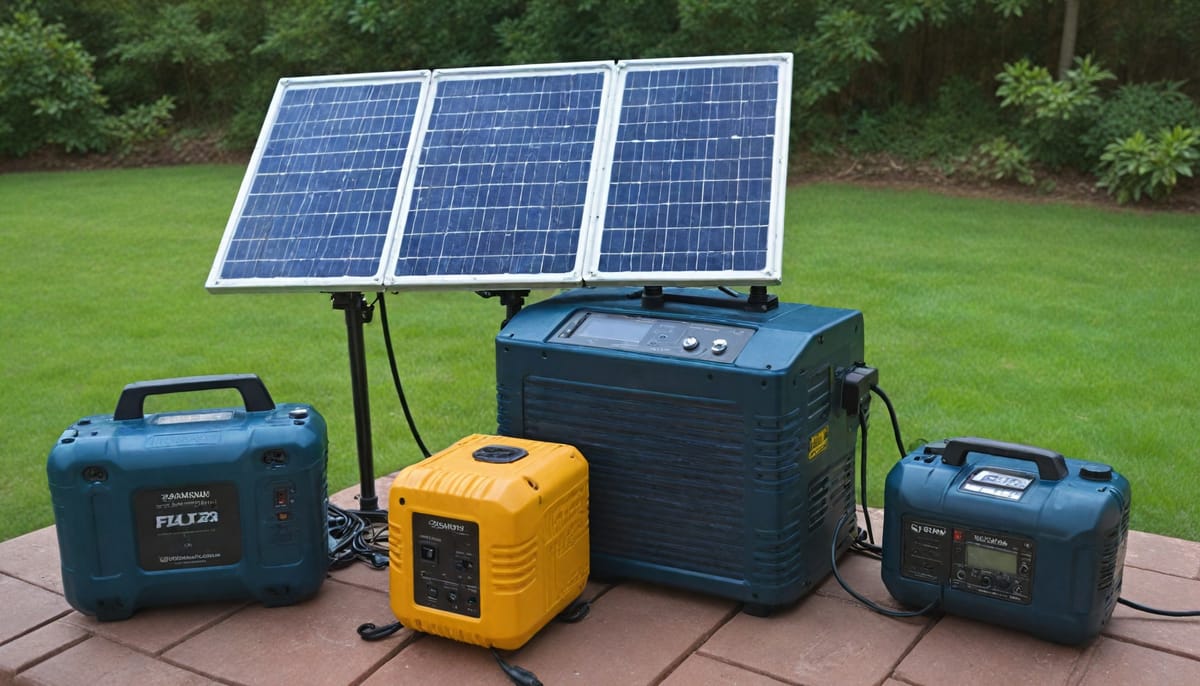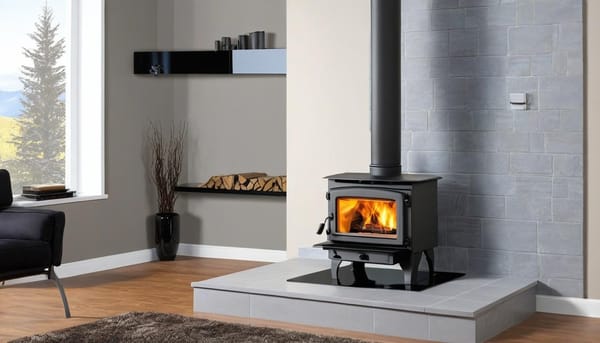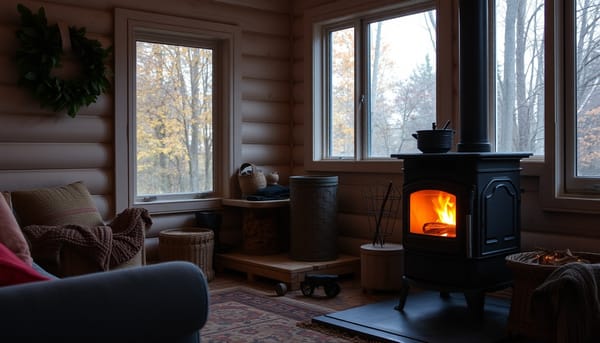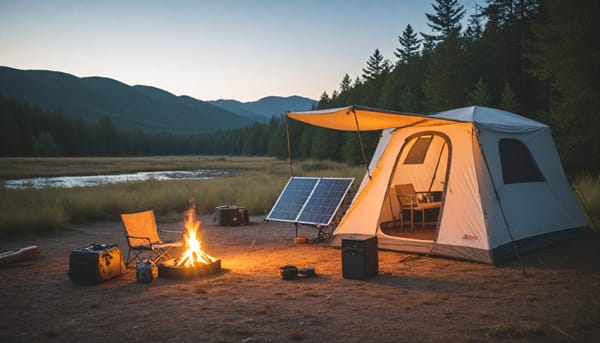10 Easy Steps to Power Up: Simplifying Home Solar Generators

Have you ever thought that harnessing the sun's power for your home is like rocket science? Well, it's time to bust that myth wide open! Many believe that setting up a solar generator is a task best left to tech wizards, but we're here to show you it's not as complex as it seems. This guide will answer some concerns I've heard through helping others set up their solar generators for their homes.

#1 Sunlight is Enough
Have you ever worried that your solar panels need bright and sunny days each day in order to work properly? Worry no more! Just like how you can still feel the warmth of the sun on a cloudy day, solar panels can still soak up enough light to power your home. Solar panels are like hardworking little bees collecting every bit of sunlight they can find, even when the sky is grey. They can still produce electricity during cloudy weather, although not as much as a sunny day.

#2 Efficiency is Key
Even though solar panels are not perfect at grabbing every single ray of the sun's energy, they're still pretty amazing at their job. The best solar panels out there can turn about 22% of the sun's energy into electricity, which is a lot! That's more than enough to keep the lights on, fridge running, and games going. Scientists are always finding new ways to improve the proficiency of solar panels. Be assured, solar panels today are enough to meet all your electrical residential needs.

#3 Easy Connection
Think of your solar generator and panels as a puzzle piece that fits perfectly into your home's energy picture. Connecting it to your home is like plugging in a video game console to your tv. It's designed to be simple. With the help of a professional, your solar system can join hands with your home, allowing you to use solar power when the sun is shining, and the power grid is down. Also, if your panels make more energy than you need, you can send it back to the grid. It's like having a savings account for electricity. You deposit the extra power and can withdraw it when you need a little boost. Don't let the thought of connecting solar panels to your home scare you. It's easier than you think, and it means you'll always have the power you need, rain or shine.

#4 Affordable Options
Starting your solar journey doesn't mean you have to purchase everything all at once. You can collect pieces over time and add to your array. Begin with a few panels, a small generator, and as you save money, you can add more pieces in order to complete the vision you have for your home. This way, you're spreading out the cost making it easier on your wallet. Plus, you get to learn about each part of your solar kit as you go, which means you'll be a solar pro by the time it's complete. Each additional component you add contributes to increased savings on your energy bill through cost reductions and compound savings. So, take your time, build your kit, and watch your energy bill disappear.

#5 Simple Setup
Building your solar generator is a lot like putting together a puzzle. It's all about fitting the right pieces in the right places. You start with a few solar panels, add a battery, and finally hook up an inverter. It's not much different from assembling a model airplane or a new toy. You can follow easy step-by-step instructions, and there are even kits that come with everything you need. Before you know it, you'll have your very own solar generator ready to go. If you're not sure about something, remember that online assistance is readily available whether through friends or professional services.

#6 Battery Backup
With a battery backup, you can keep all the extra energy your solar panels make during the day and use it at night or during a power outage. It's like having a big energy bank that's always full when you need it. This means even when the sun goes down your home can still function with power from the day's sunshine. Also, if the power grid ever goes down you won't even notice because your lights and fridge will keep running smoothly on your stored solar power. With a battery backup, you're the boss of your own power supply, rain or shine, day or night.

#7 Solar Inverter Essentials
An inverter is key for solar energy kits because it transforms the electricity from solar panels into a form that your home and gadgets can use. It turns direct current (DC) into alternating current (AC), which is what most electrical devices need. Besides changing the current, inverters help get the most power from your panels, keep an eye on their health, and make sure the energy can be shared with the electrical grid. Without an inverter, the solar power generated wouldn't be able to be used in your home.

#8 Recharging Time
Typically, a solar generator can take anywhere from 1.5 to 48 hours to fully charge, depending on several factors. Battery capacity, efficiency of the solar panels, and weather conditions all need to be taken into account. However, advancements in technology have led to faster charging times, with some models able to reach full charge in under an hour using optimal conditions and power inputs. It's also worth noting that multiple charging methods are available, including wall outlets and car adapters. To mitigate long charging times, it's advisable to charge your solar generator in advance during sunny days. This way you ensure you have a reliable power source when needed most. With proper planning and understanding of your solar generator's capabilities, recharging time becomes a manageable aspect of solar energy usage.

#9 Space Requirements
When it comes to solar arrays, one of the practical considerations are the space requirements for installation. The size of your solar setup will depend on your energy needs and the capacity of the system. It's important to have a clear area, land or roof, that receives ample sunlight throughout the day. Additionally, you'll need to consider safe placement for the battery itself to avoid any safety hazards. While space can be a limiting factor, especially in urban settings, many solar kits are designed with a compact footprint to accommodate smaller spaces. Plan ahead for your solar generator's placement for efficiency and safety.

#10 Maintenance and Durability
Maintaining your solar generator is key to ensuring its longevity and reliability. A well-maintained solar generator can last up to 20 years. Regular maintenance includes cleaning solar panels to prevent efficiency loss, checking battery levels, and ensuring connections are tight. It's also important to avoid overloading the system. Demanding energy that exceeds its designed capacity can damage your inverter. Avoid running multiple high-powered devices at the same time and ensure your solar panel array are the proper size. Solar panels surpassing the capacity an inverter can handle can lead to potential energy loss and even damage. To prevent this, ensure the solar panel output doesn't exceed the inverter's capacity, which is the maximum amount of power it can convert from DC to AC. Proper system sizing, guided by a solar professional and the inverter's specifications are crucial. This way, you protect your investment and enjoy efficient solar energy conversion without the risk of overloading your system.

The Grid Breaker
Join us by subscribing to "The Grid Breaker" blog! Stay informed, inspired, and ready for the future with our latest updates on off-grid living and solar energy. Don't miss out on practical tips, expert advice, and community stories that empower you to break free from the grid. Plus, explore a world of readiness at GetReadyCo.com where you'll find everything you need to make your solar transition seamless. Subscribe and visit today to take the first step towards a free energy tomorrow.




